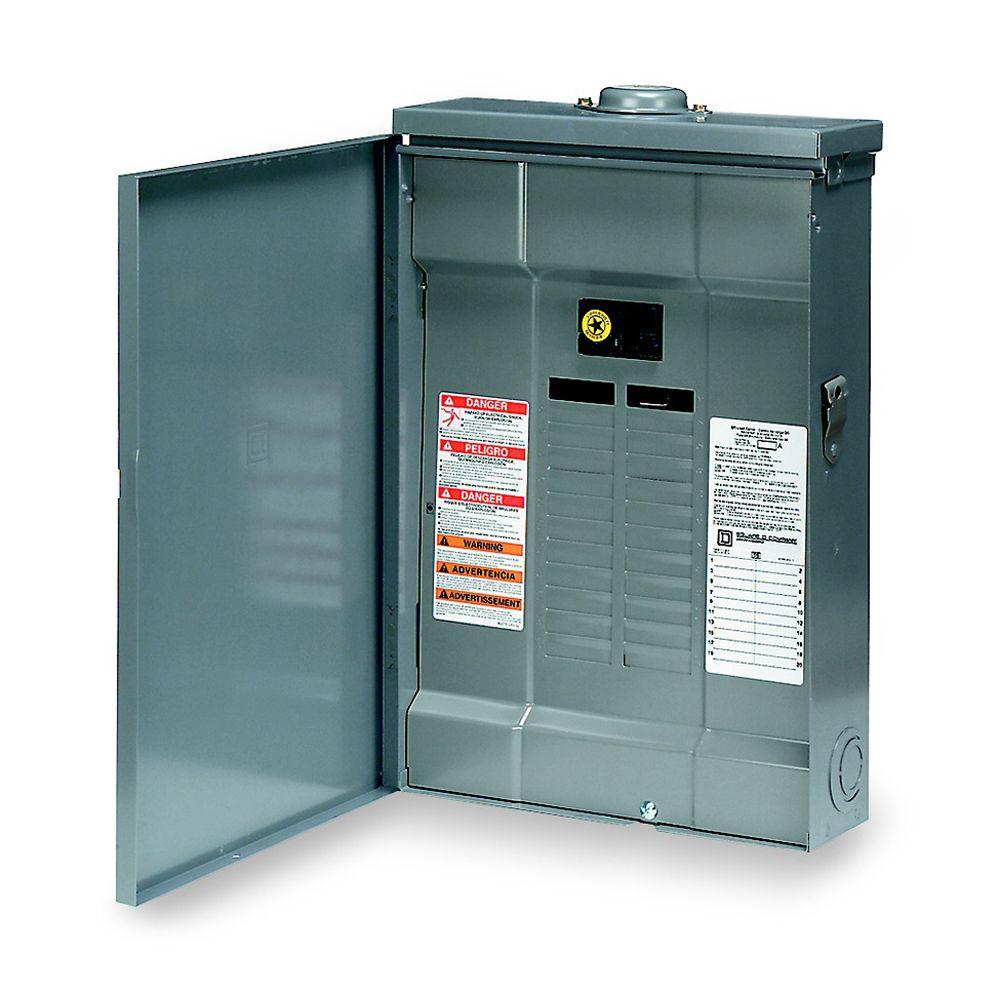

Notice also that some of the double pole breakers in the area labeled “Service Disconnects” have been changed to single pole breakers-violating the 6 throw rule. Note how the wires from breaker #2 travel down behind the six spaces and attach (trust me) to the bars for the bottom breakers highlighted in red. Note that the top six double pole breaker spaces are outlined with blue dotted lines and are numbered 1 through 6. The blue dotted lines are where the power coming into the panel attach to the bus bars. What is different about the panels can be visualized by by the following picture with descriptive overlays. The next picture is of a split bus panel with the cover off-notice how much it looks like the sub-panel picture above (well except for neatness)? Split Bus Electrical Service Panel This means that when all those top breakers are turned off-all power to the breakers in the panel will be off-including the lower breakers. Notice it says, “SERVICE DISCONNECTS” in the center between the upper breakers? Split Bus Electrical Panel The following picture is of a typical split bus panel with its dead-front cover in place. This type of Service Panel is called a Split-Bus Panel. This type of panel is configured such that it takes a maximum of 6 throws to shut all the power off. There is another type of panel that looks, at first glance, like it might be missing a main breaker. This type of panel will not usually have a main disconnect-it will be located at the electrical service equipment-typically where the meters are located. As a Seattle Home Inspector I love finding panels this nicely wired.

The following picture is of a pretty close to correctly wired sub-panel. Of course it does no harm to have one and one is often installed for convenience. This type of panel doesn’t “require” a main breaker unless it is in a detached structure. In these instances the panel in the home is not the electrical service equipment but is instead called a sub-panel.

(I am not going to talk about fuses in this post). Where it gets a little confusing is when that main disconnect breaker is in a different location from the panel in the home-like outside the home at the electric meter (as in mobile homes, townhouses, condos and other instances). The first point I will make is that ALL electrical services to the home MUST have a means of shutting off all the power.īeing able to shut off all of the power is usually achieved by a Main Disconnect Breaker in the electrical service panel-and should be labeled as such. Real estate agents and home owners need to understand the basic principles so that when the inspector calls for replacement of what appears to be a perfectly good panel, they can understand why. My goal is to keep this post simple enough that most readers can understand what I am talking about.

There are a couple of ways where it might “appear” to be missing-but is in fact there after all. The simple answer to this question is, “No-Probably not.”īecause most electrical service panels are NOT installed by homeowners or “Uncle Harry,” it is actually pretty rare to find a main panel without a main disconnect. Doesn’t the Electrical Service Panel HAVE to have a Main Disconnect Breaker?” Main Breaker


 0 kommentar(er)
0 kommentar(er)
